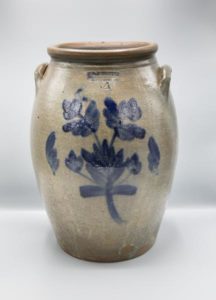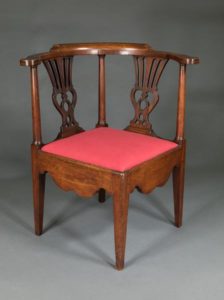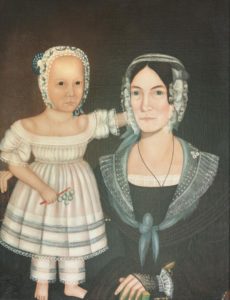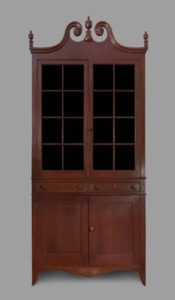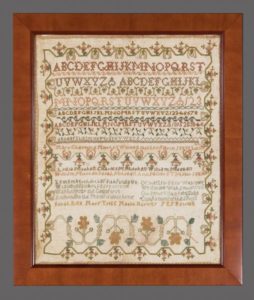MESDA Is on the Road Again!
By Gary Albert, June Lucas, and Kim May
The field research program initiated by the Museum of Early Southern Decorative Arts (MESDA) in the early 1970s was one of the first of its kind in the country. During an approximate fifteen year period, thanks to generous funding from the NEA and NEH, MESDA’s founder Frank Horton and a bevy of young museum professionals scoured the American South photographing and documenting decorative arts objects made and used in MESDA’s seven state region—Maryland, Virginia, North and South Carolina, Georgia, Tennessee, and Kentucky. The result of that research became the basis for the MESDA Object Database, a collection of over 20,000 images of southern furniture, paintings, metals, textiles, ceramics, and other decorative arts. Once funding for the program ended, additional objects were sporadically added to the database, but the important systematic recording of objects ceased. For the past thirty-three years, approximately 40 objects have been added to the database yearly, some of which were photographed in the field, while others showed up at MESDA’s back door to be documented.
That remained the case until a year ago, when generous funding from the MARPAT Foundation of Washington, DC, enabled the museum to reinstitute its official field research program. Since the fall of 2017 MESDA’s field research team of Editorial Director (and photographer) Gary Albert, Director of Research June Lucas, and MESDA Research Center Manager Kim May have visited upcountry South Carolina, east Tennessee, and coastal Virginia twice, where they have recorded approximately 200 new objects that now are part of the MESDA Object Database (Figure 1). One additional visit to Wythe County, Virginia, took place last month.
Because of practical and technological changes during the past thirty years, the recording process is more streamlined now. Rather than documenting a few items per household, as was done in the 1970s and 1980s, the team now visits one or two sites in a week and records established collections, especially ones that have strong regional ties. For example, in upcountry South Carolina, we focused on objects with strong provenances in Anderson, Laurens, Greenville, Spartanburg, and Richland counties; in Virginia, items with histories in the Tidewater region (Figures 2, 3, 4); and in east Tennessee, pieces created in Hawkins, Greene, Washington, Sullivan, and Grainger counties (Figure 5). The final 2018 Wythe County, Virginia, visit documented objects tied to that region.
With today’s available online resources such as Family Search, Ancestry.com, and period newspaper websites, documenting the histories of objects recorded in the field is much easier and thus can be done more thoroughly. As a result, MESDA’s team can quickly understand an object as a piece of material culture that illuminates the lives of its owners. For example, a sampler MESDA documented as part of an important Virginia collection clearly identified its maker Mary Charlotte Mitchell in silk thread (Figure 6). However, the identity of her teacher and the school she attended were unknown. A few hours of online research identified the “S. T. Miller” and “Ann Miller” stitched on the sampler as Samuel Thomas Miller, who, along with his mother, Ann Miller, operated a school for girls. It was first named New London Female Academy and later Roland Academy, and was located in New London, Campbell County, VA, from approximately 1811 to 1823. The Mary Charlotte Mitchell sampler was almost certainly overseen by Ann Miller and stitched at the New London school. Further research brought to light instructress Ann Miller’s sad story of a bad marriage to an intemperate gambler, one whose behavior was so unforgivable that Ann was forced to leave her husband and take care of her family by the use of her needle. Her success is a powerful story of female fortitude, one that now unfolds on the MESDA Object Database.
Other times the object tells its own story. The miniature of a child recorded in MESDA’s upcountry South Carolina visit was attributed by the owner to an unknown artist (Figure 7). The sitter, reputed to be young Hester High Cantrell, who was suffering from diphtheria at the time the likeness was taken, lived in Spartanburg County. That much was known, but the artist was a mystery. However, when the owner agreed to take the miniature apart for photography, all were surprised to see written on the back: “By / G. H. Hite / Columbia So Ca / 1835.” While the MESDA Craftsman Database had recorded the artist George Harrison Hite as working in Columbia in 1835, until the miniature revealed its secrets, no painting by Hite was known. Now the image of Miss Cantrell can be connected to its artist.
Once the objects have been photographed and documented, the digital images and metadata are added to the MESDA Object Database, which is available free of charge at www.mesda.org. Users can search the database by keyword or select filters to focus by maker, object type, date made, or place made. While new records are entered digitally, before the Object Database could be made accessible online the monumental task of scanning four decades worth of photographic prints—over 100,000 images—had to be undertaken. That process took four years and was underwritten by the MARPAT Foundation. Since going digital, the Object Database is consistently one of the most utilized tools on the museum’s website and has re-invigorated MESDA’s fieldwork.
MESDA foresees the present field research model continuing in the future, thanks to the promised gifts of numerous generous individuals. Adding approximately 225 objects yearly to the MESDA Object Database is a worthwhile goal, one that enables the museum to tell the stories of Southerners through the objects they created and used on a daily basis. It’s good to be on the road again!


